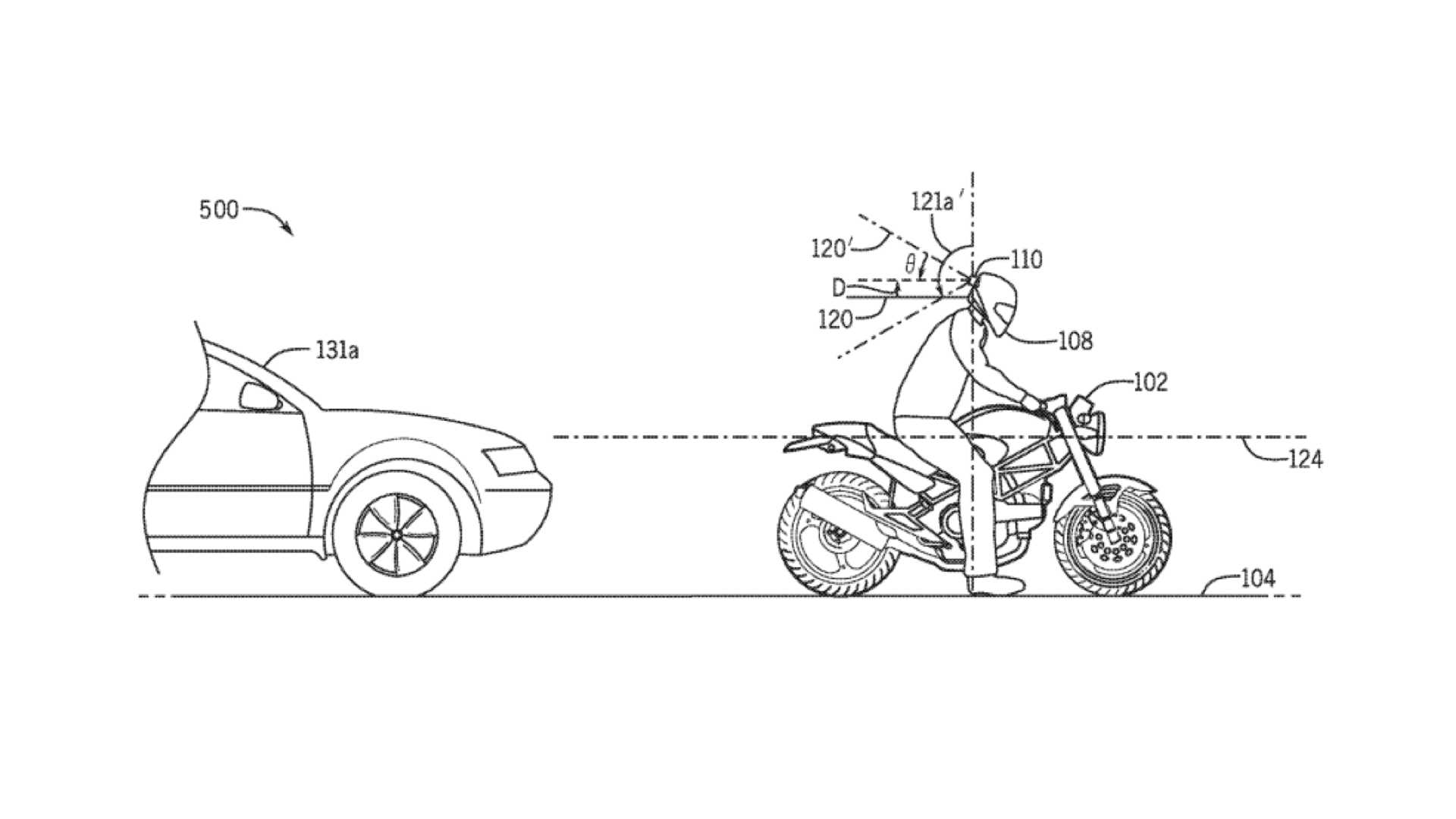

We may earn revenue from the products available on this page and participate in affiliate programs. Learn more ›
There have been a number of future-forward motorcycle technologies proposed over the years to make riding safer. Very few have seen public debut and even fewer have ever made it into the public’s hands. Of those technologies, the rear-facing camera/mirror/radar-incorporated helmet has been one of the most touted within the industry—it’s also been the least financially proven. Honda, however, appears poised to change that.
Buried in the U.S. Patent Office’s stacks of applications is Honda’s newly filed patent for a rear-facing camera/radar system to be built into a motorcycle helmet. According to the patent application, the helmet would feature a rear-facing camera that takes a live feed of everything behind the rider. However, unlike other proposed systems in the past, rather than send the feed to a helmet-incorporated head-up display, Honda’s system would relay the feed to a display on the motorcycle’s instrument cluster.

Honda’s system also includes a secondary radar system that would be built into the camera mechanism. The system is designed to detect faster-than-average moving vehicles behind the rider and alert them to potential accidents. However, as of right this moment, the system is still theoretical and based on other similar products, could very well disappear into the ether only to be brought up again in a few years.
There are also a few potential issues we can see based on Honda’s proposed design; first and foremost, weight. A camera/radar system integrated into a helmet will likely be heavy. For active riders, helmet weight and the resultant fatigue are real concerns. This issue has led manufacturers to build lighter, but more durable helmets—like AGV’s Sportmodular carbon helmet which weighs just 2.85 pounds and is one of our favorites. Further, Honda’s proposed system requires a helmet AND motorcycle, not just a helmet like similar designs. This likely means you’d have to buy the helmet and compatible motorcycle from Honda. All riders wouldn’t see the benefits.

Though we’re very much pro rider safety, systems and technologies like Honda’s have been proposed numerous times in the past, but have rarely made it to market. Unlike those systems, however, this proposed mechanism has the might of Honda backing it, so it has a better shot. We’ll just have to wait and see.